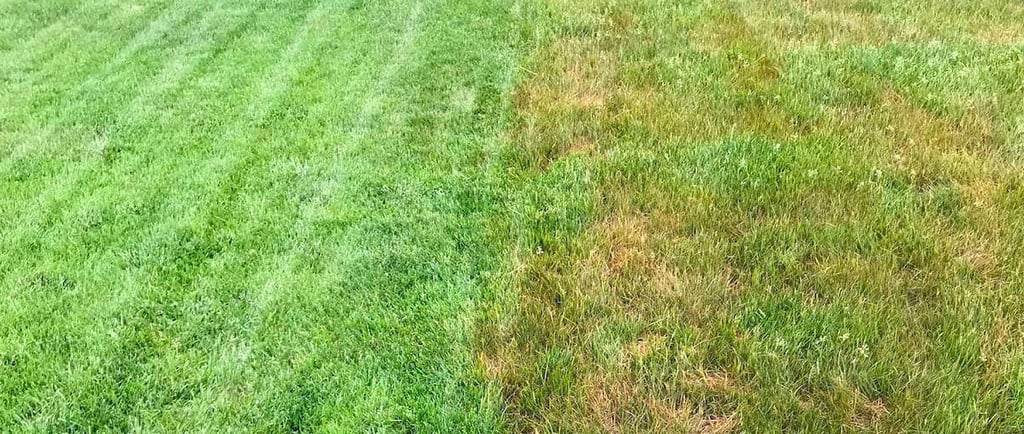5 Heat Wave Lawn Care Tips to Keep Your August Grass Alive
When the August sun is blazing and rain is scarce, your lawn can quickly go from lush green to dull and stressed. Heat waves put intense pressure on grass, but with the right care, you can keep your lawn healthy and resilient through the hottest days of summer. Here are five essential tips to help your lawn survive—and even thrive—during a heat wave.
LAWN CARE TIPS


1. Water Deeply and Infrequently
During extreme heat, shallow watering can do more harm than good. Instead of frequent, light watering, aim for deep, infrequent sessions. Watering early in the morning is best, as it minimizes evaporation and gives your lawn a full day to absorb moisture. A good rule of thumb is to provide about 1 to 1.5 inches of water per week, delivered in two or three deep soakings.
Pro Tip: Place an empty tuna can on your lawn when watering. Once it fills up to about an inch, you’ve given your grass enough.
2. Raise Your Mower Blades
Scalping your lawn in summer is a recipe for disaster. Taller grass shades the soil, helps retain moisture, and protects the roots from the harsh sun. During a heat wave, raise your mower blades to 3–4 inches depending on your grass type. Leaving the clippings (a practice known as grasscycling) also adds nutrients back into the soil and provides extra shade.
3. Avoid Fertilizing and Heavy Treatments
While it may be tempting to green up your lawn with fertilizer, doing so during extreme heat can stress your grass even more. Fertilizer encourages growth that your lawn can’t sustain under heat stress. Instead, wait until temperatures cool in late summer or early fall to fertilize, aerate, or overseed. Focus on simple maintenance and water management during the heat wave.
4. Limit Foot Traffic
Grass under stress doesn’t recover as quickly from wear and tear. Try to limit kids, pets, and heavy equipment on the lawn until the heat wave passes. If you must use your lawn, rotate traffic areas or create a designated play spot to reduce stress on the entire yard.
5. Consider Drought-Tolerant Options
If your lawn consistently struggles during hot spells, it may be time to introduce drought-tolerant grasses or xeriscaping techniques. Fine fescues, buffalo grass, and certain types of Kentucky bluegrass are more resistant to drought. Incorporating native plants, mulch beds, or even decorative stones can reduce water use while keeping your yard beautiful.
Final Thoughts
Heat waves can be tough on lawns, but a few smart adjustments will help your grass stay alive and strong through August. Focus on watering deeply, mowing high, avoiding harsh treatments, protecting from wear, and planning long-term with drought-tolerant solutions. With these strategies, your lawn will bounce back quickly once cooler weather arrives.


